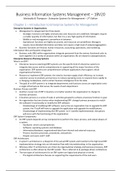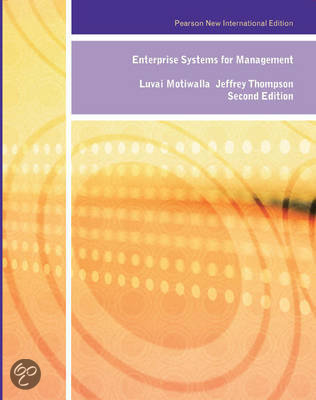Samenvatting
Summary Business Information Systems Management - 1BV20
- Vak
- 1BV20 (1BV20)
- Instelling
- Technische Universiteit Eindhoven (TUE)
Summary of chapters 1,2,3,4,8,9,10, and 11 of the book Enterprise Systems For Management, by Motiwalla & Thompson (2nd Edition), and six additional readings including the following articles: - Pearson& Saunders – Strategic Management of Information Systems – 5th Edition - Chapter 2 - Asad – F...
[Meer zien]





